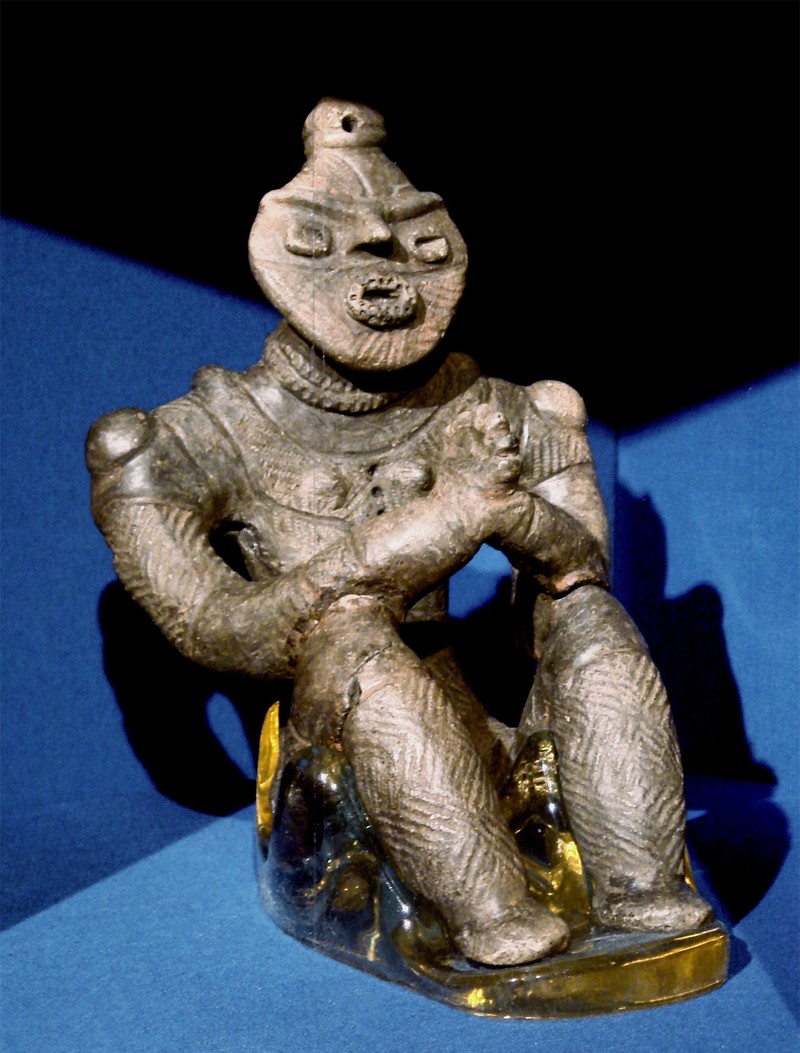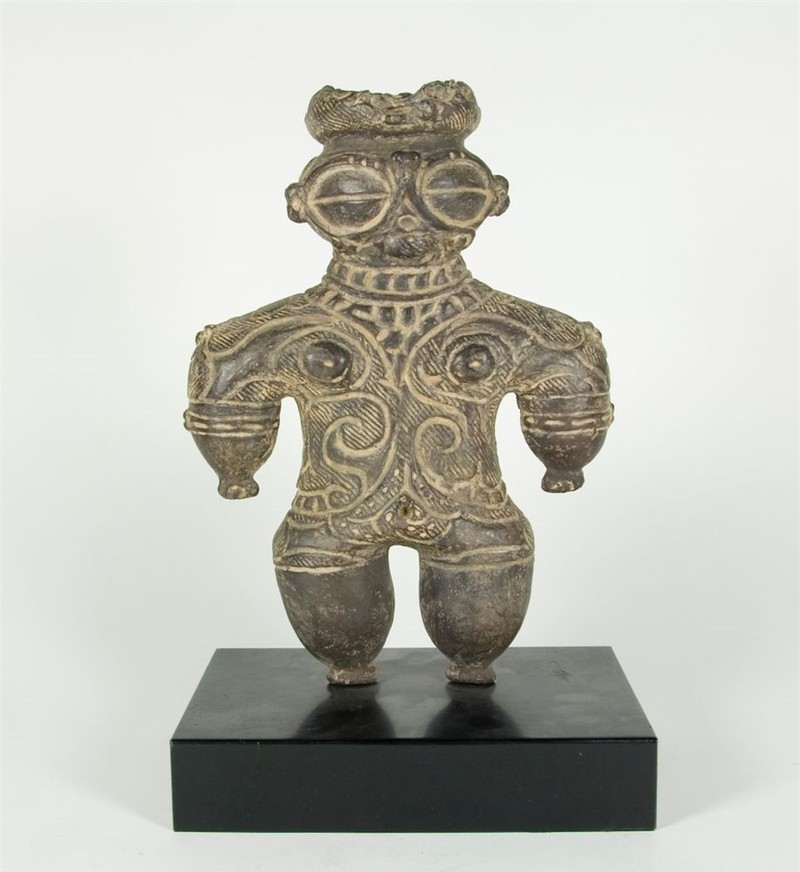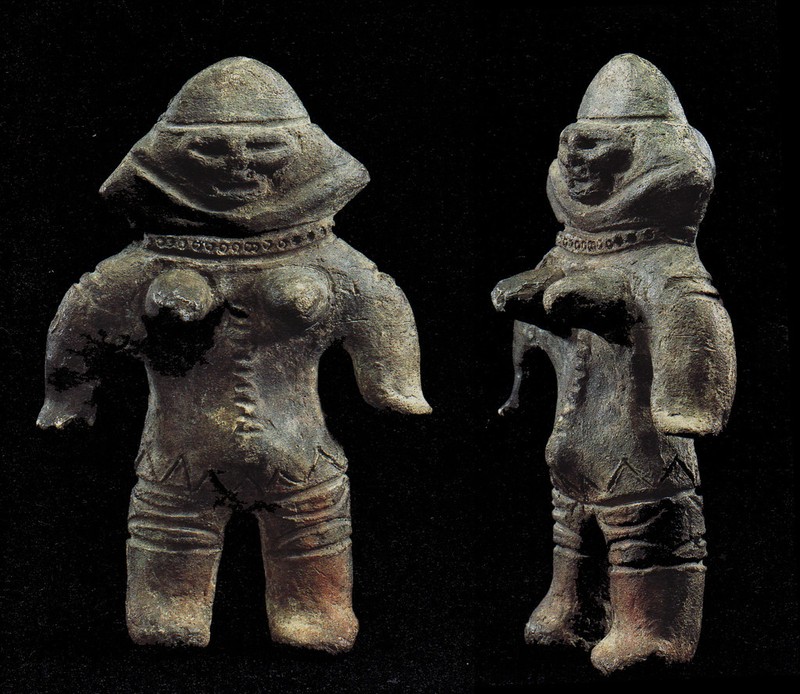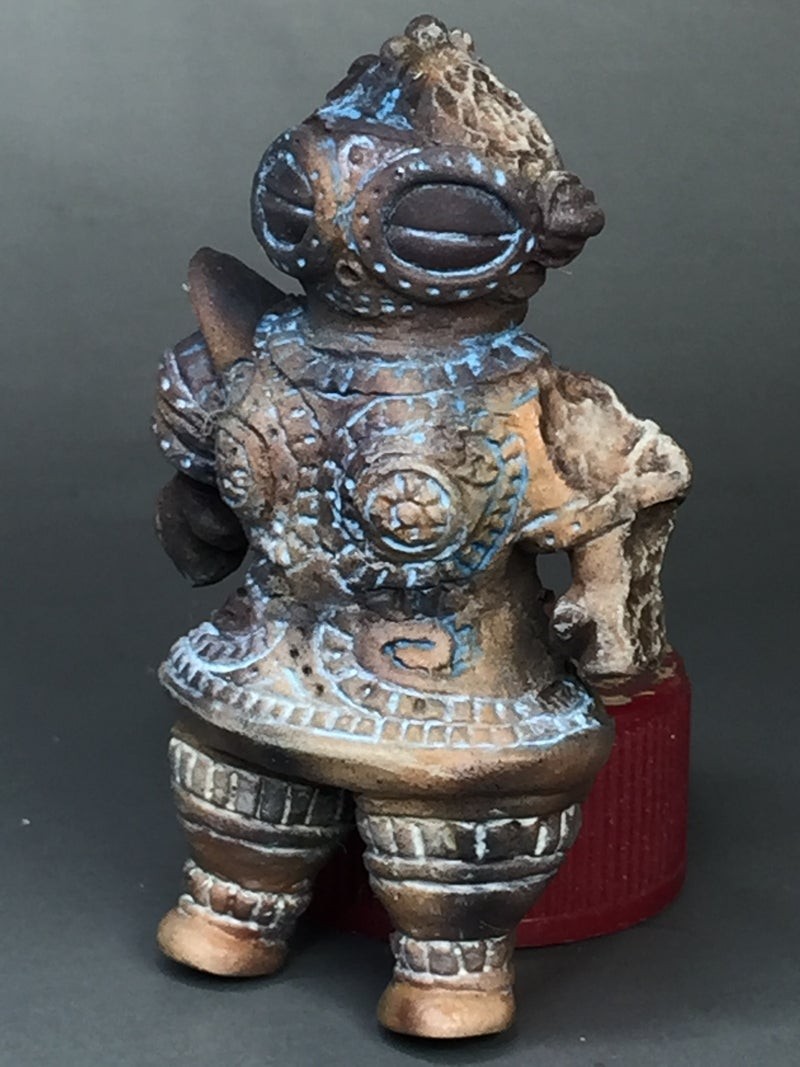Dogū: One of Japan's oldest mysteries
We know a lot about what happened in the past through the recovery and study of archaeological items. However, there are still mysteries in the past that until now we still cannot fully understand
.As time passed and humans began to evolve, they developed language and writing. Our knowledge is largely recorded only since it evolved from cuneiform, Egyptian hieroglyphs and Greek texts written by historians of the time. We can read, learn and interpret the content of these ancient works. The frustrating thing about human history is that before cultures started writing, we don't know what their cultural practices were. What did the archaeological items of that time represent or what was their specific purpose? Or simply whether small non-tool items are used in some people's religious traditions. There are still so many things that to this day we still cannot explain clearly. It makes us search for answers, speculate and come up with theories ranging from logical to illogical in this desperation to discover about humanity's past. One of these ancient and puzzling items we found was a dogū figurine made in prehistoric Japan. Dogū, meaning "earthen statue", are small clay figurines of human or animal figures created during the late Jōmon period of prehistoric Japan. What makes dogū figurines so fascinating is that scholars have no idea what these figurines were made for or what they represent
Dogū, meaning "earthen statue", are small clay figurines of human or animal figures created during the late Jōmon period of prehistoric Japan. What makes dogū figurines so fascinating is that scholars have no idea what these figurines were made for or what they represent The Jōmon period was actually a long period, a period in Japanese history that lasted from 14,000 to 300 BC. At that time, the Japanese people were hunter-gatherers. Early farming communities were also formed during the period of the Jōmon culture. At the beginning of the Jōmon period, the first forms of pottery in Japan developed. In 1998, American archaeologist and zoologist, Edward S. Morse, found the first pieces of pottery from the Jōmon period. It was Morse who named the period; Jōmon means "marking rope". A style of pottery from the early Jōmon culture decorated by pressing wire into wet clay to form different designs and textures. We don't know the specific purpose or significance of these figurines because writing in Japan only began to develop in the 6th century AD, long after dogū was created. . Dogū were only created during the Jōmon period, and by the time the next period of Japanese prehistory occurred, dogū statues were no longer created either.
The Jōmon period was actually a long period, a period in Japanese history that lasted from 14,000 to 300 BC. At that time, the Japanese people were hunter-gatherers. Early farming communities were also formed during the period of the Jōmon culture. At the beginning of the Jōmon period, the first forms of pottery in Japan developed. In 1998, American archaeologist and zoologist, Edward S. Morse, found the first pieces of pottery from the Jōmon period. It was Morse who named the period; Jōmon means "marking rope". A style of pottery from the early Jōmon culture decorated by pressing wire into wet clay to form different designs and textures. We don't know the specific purpose or significance of these figurines because writing in Japan only began to develop in the 6th century AD, long after dogū was created. . Dogū were only created during the Jōmon period, and by the time the next period of Japanese prehistory occurred, dogū statues were no longer created either. All theories and interpretations of what the dogū represent are speculative and are one of the many reasons why these small clay figures are so mysterious. In fact, we know that there are several different styles of dogū making, largely depending on where the artefacts are found and the time period in which the dogū was made. Why these styles developed is also part of the mystery of dogū. The dogū statues are small and range in size from 10 cm to 30 cm. Most of the dogū found have female body shapes. Common features include large eyes, small waist, wide hips, and sometimes a pregnant belly
All theories and interpretations of what the dogū represent are speculative and are one of the many reasons why these small clay figures are so mysterious. In fact, we know that there are several different styles of dogū making, largely depending on where the artefacts are found and the time period in which the dogū was made. Why these styles developed is also part of the mystery of dogū. The dogū statues are small and range in size from 10 cm to 30 cm. Most of the dogū found have female body shapes. Common features include large eyes, small waist, wide hips, and sometimes a pregnant belly Many scholars believe that these figurines represent a mother goddess in ancient Japanese civilization. This is given by dogū being quite similar to other Neolithic figurines such as the Venus of Willendorf. It is likely that dogū was an item associated with fertility and shamanic rituals. The dogū's appearance looks as if it is wearing swimming goggles or has a distinctly heart-shaped face. What's also interesting is that most dogū found had markings on their faces, shoulders, and chests that could indicate they had tattoos. There are four different shapes of dogū: "pregnant woman type", "horned owl type", "squinty-eyed type", and "heart-shaped or crescent-shaped eyebrow type". The squinty-eyed type, also known as Shakōkidogū, has become so famous and recognizable that many Japanese people think of Shakōkidogū when someone mentions dogū characters. The glasses-wearing dogū gets its name from shakōki, literally "light blocking device". The goggles are similar in appearance to the traditional snow goggles of the Inuit and Yupik Indians of Alaska and Siberia. It is very rare to find an intact dogū. Most dogū found are missing a leg, arm, or another body part. While some are broken, there have been a number of dogū found whose limbs had been intentionally severed.
Many scholars believe that these figurines represent a mother goddess in ancient Japanese civilization. This is given by dogū being quite similar to other Neolithic figurines such as the Venus of Willendorf. It is likely that dogū was an item associated with fertility and shamanic rituals. The dogū's appearance looks as if it is wearing swimming goggles or has a distinctly heart-shaped face. What's also interesting is that most dogū found had markings on their faces, shoulders, and chests that could indicate they had tattoos. There are four different shapes of dogū: "pregnant woman type", "horned owl type", "squinty-eyed type", and "heart-shaped or crescent-shaped eyebrow type". The squinty-eyed type, also known as Shakōkidogū, has become so famous and recognizable that many Japanese people think of Shakōkidogū when someone mentions dogū characters. The glasses-wearing dogū gets its name from shakōki, literally "light blocking device". The goggles are similar in appearance to the traditional snow goggles of the Inuit and Yupik Indians of Alaska and Siberia. It is very rare to find an intact dogū. Most dogū found are missing a leg, arm, or another body part. While some are broken, there have been a number of dogū found whose limbs had been intentionally severed. We may never know what the dogū's true purpose was. Because there was no written language at the time they were created. It is believed that dogū were created and owned by women (there is no evidence that they were created by women or who would have owned them, so this is purely speculation) and are symbolic of rebirth and reproduction.
We may never know what the dogū's true purpose was. Because there was no written language at the time they were created. It is believed that dogū were created and owned by women (there is no evidence that they were created by women or who would have owned them, so this is purely speculation) and are symbolic of rebirth and reproduction.









































